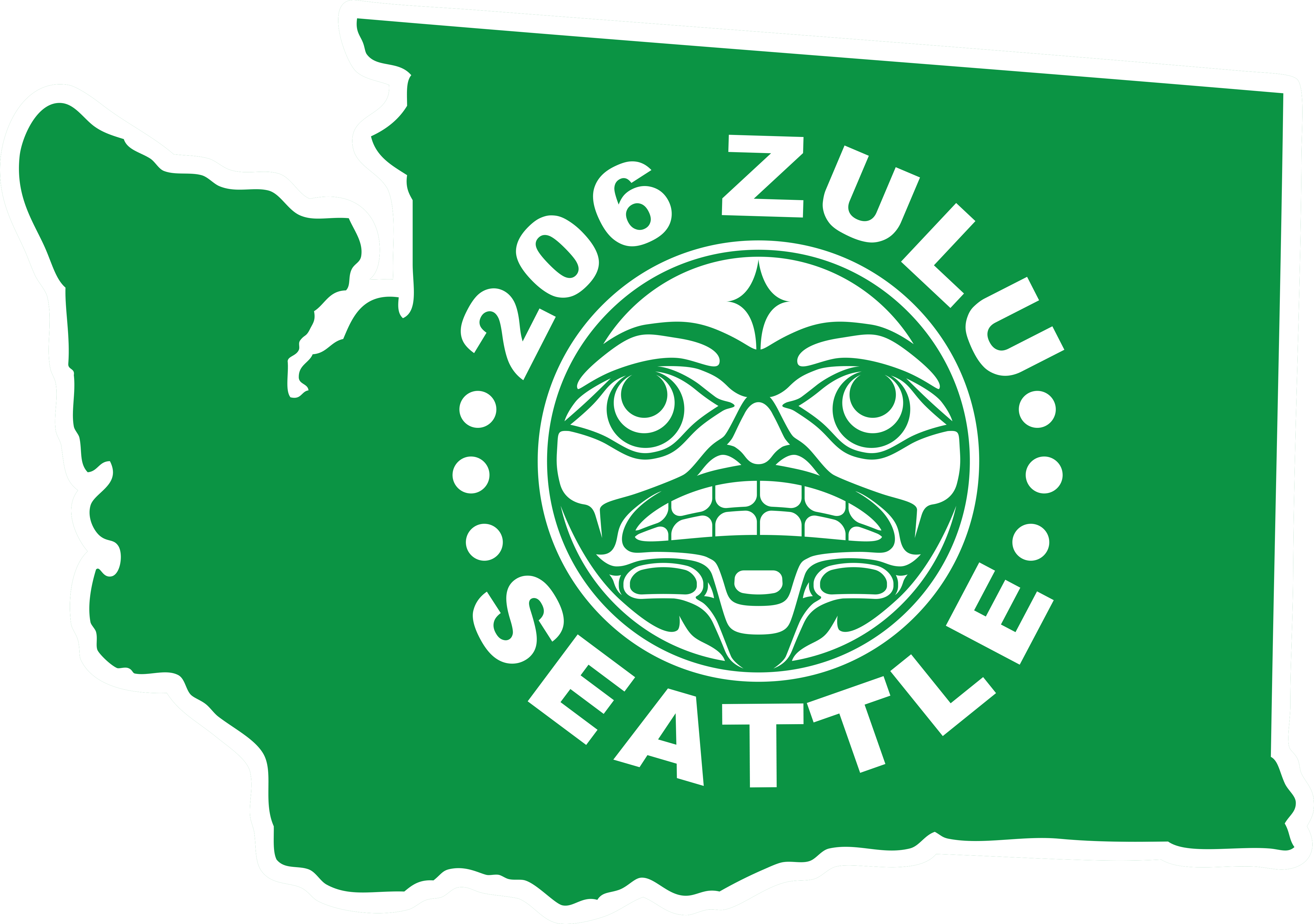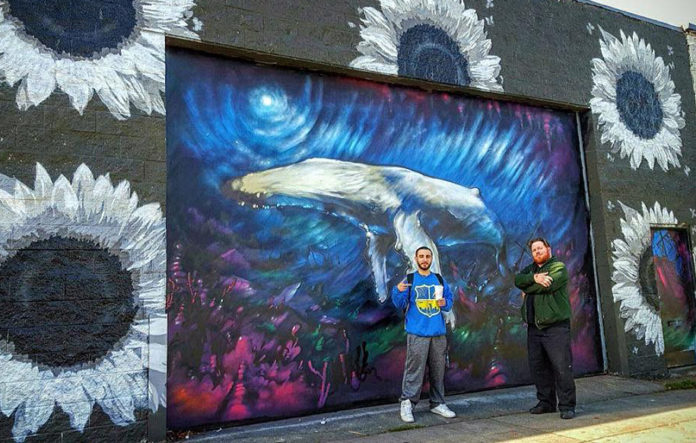Gentrification is a complex stone with many facets to view it through. It shines in different ways depending on how you turn it and the state of mind behind the eye of the beholder. The players involved in its story are myriad. There are developers, migrating pilgrims, hipsters, police, business owners, artists, activists, and of course the residents- their history of movement and building a neighborhood, the culture they infuse into the walls and sidewalks, facades, and storefronts. The changes that gentrification brings to the physical universe of streets and homes harken to what stands to be lost every time something is demolished to make way for a high rise apartment building. A common narrative speaks of a community rallying around a favorite restaurant or historical building, fighting to save it from the bulldozers set to crash through its walls and make room for condos priced leaps beyond the average income of people that have lived on that block for generations. The story of Dozer’s Warehouse interacts with gentrification in this way, but in a slightly different way as well, one that turns the stone to facets we rarely consider it through. But that’s getting ahead of ourselves. The story of how Dozer’s Warehouse came to be begins with the usual watermarks of urban development through commercial expansion.
Our prelude opens in 2015, when the community organization Beacon Business Alliance, tasked with beautifying the North Beacon business district to increase demand for commerce, hired Seattle graffiti fixture Charms Won to paint a mural on the side of a defunct plumbing supply warehouse. Charms reached out to Crick Lont, better known in the art world as Dozer, to collaborate on the mural. When the mural was finished, Charms sunlit humpback whale and Dozer’s signature sunflowers lit up a corner overlooking dim sum and carnitas restaurants, tax offices, and a grocery store. The local residents were gifted with a lovely new visual on their walk to the market, and the pioneers venturing into the south end from other parts of the city had a new reason to consider Beacon Hill hip and artsy.
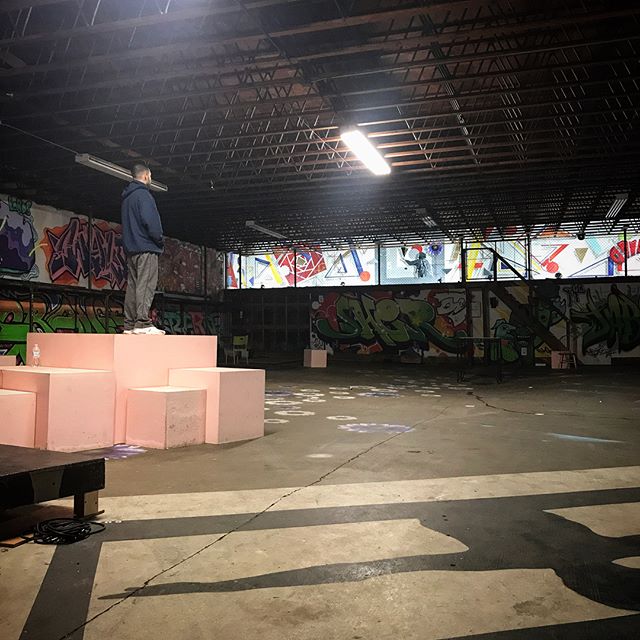
Beacon Arts is a volunteer run organization working to activate underutilized spaces to generate greater opportunities for artists in the area. In April of 2017, Beacon Arts became the caretakers of the whale and sunflower warehouse and began holding community events in the space. By this time, the mural on the side of the building had already woven itself into the identity of the block. The new caretakers brought Dozer back to help breathe the same life into the interior of the long abandoned warehouse. Dozer, a child of Hip Hop values, forged from the kiln of his graffiti writer upbringing and his early nights shared with his brother’s multiple emcee collectives, would later say, “Masterpieces are works of art born from great collaborations.” From a trip to the Paradiso Arts Festival shortly after Beacon Arts acquisition of the space, he led a caravan of sleepless artists with loose cans of spray paint back to the warehouse and its new life began.
The Greek philosopher Heraclitus said, “The only constant in life is change.” Change is the common theme surrounding what would become Dozer’s Warehouse. For better or worse, Beacon Hill is changing. Dozer, bombing trains and overpass signs, changed to apply his focus to canvases and commissioned murals. The wall outside of the building at 2507 Beacon Ave. changed from cold brick to ocean and flowers. Fluorescent lighting over sterile concrete floors, foremen standing over the upper balcony, looking over factory workers boxing pipe fittings has changed to an art gallery pulsing with temporary masterpieces born of great collaborations. The foremen looking over the assembly floor have changed to an audience standing on the balcony over film screenings of 1960’s diversity training videos, discussions about the nature of being black in Seattle, tween art classes, Justin Bua showcasing his work, and classic car-themed gallery exhibits. The new life was well received by the community but inevitably the winds of change would blow again. Beacon Arts announced that the building owner had sold the property and the warehouse was set for demolition in the spring of 2018.
As is common in the narrative of gentrification projects, the stakeholders of the temporary space made peace with the change and a farewell blowout party gave the fans and artists in the warehouse one more chance to rap, and paint, and dance their loss away. Up until now, this is the archetype of a story we’ve heard many times; except at this point, something occurred to throw a little twist into the tale. The demolition didn’t happen. Something in the plans of the developers postponed the wrecking balls indefinitely. Beacon Arts had already moved onto other projects but were left holding the keys to four walls of potential. The owner of the building had little stock in what would happen in the warehouse short of not being sued for a fire or stampede. As he sat thinking about what to do, Dozer’s smile, directing painters to walls, giving hugs, watching his brother perform on stage at the farewell party, came to mind. All the images and colors that had grown onto the walls and floors of that warehouse made a man planning changes want something to stay the same, at least for a little longer. A phone call, a ‘don’t screw this up,’ and a handshake later, the owner of the building threw Dozer the keys to the warehouse. There was no rent, no rules outside of safety, and no promise as to how long it would last before the wrecking ball swung this way again. So the whale and sunflower warehouse was given an afterlife, and Dozer’s Warehouse was its name.
Fast forward.
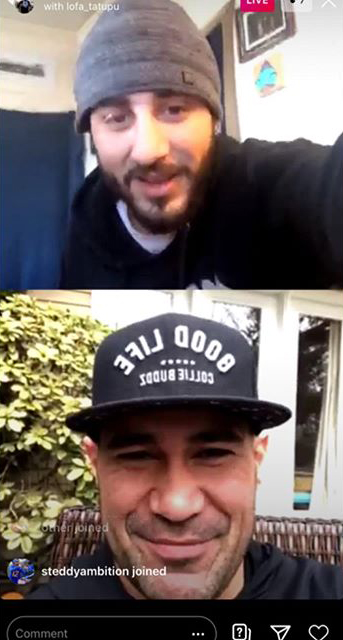
IG Live show
(@dozer_art)
“Yeah, I feel you. Like in art, a person can feel one way about a piece of art at one moment and another way the next. They might hate a piece of art, then they meet the artist. They find out they like the person that painted it, something changes, and they now they love the art.” This is Dozer in the notorious year of 2020 talking to the former Seattle Seahawks linebacker, Lofa Tatupu. Smoke floats around the room behind Dozer in his square on the live feed. Two years after he caught the keys to the warehouse, he’s sitting in a back room having a conversation on his improvised Instagram Live show, “Kush and Coffee.” He started hosting these conversations to leverage the success and creativity he’s observed in his artistic collaborators against people’s risk for quarantine depression. Between notes about the effectiveness of CBD and football anecdotes, Dozer steers the conversation back to the value of good people making good art. It’s apropos to what’s happened in the warehouse over the last two years.
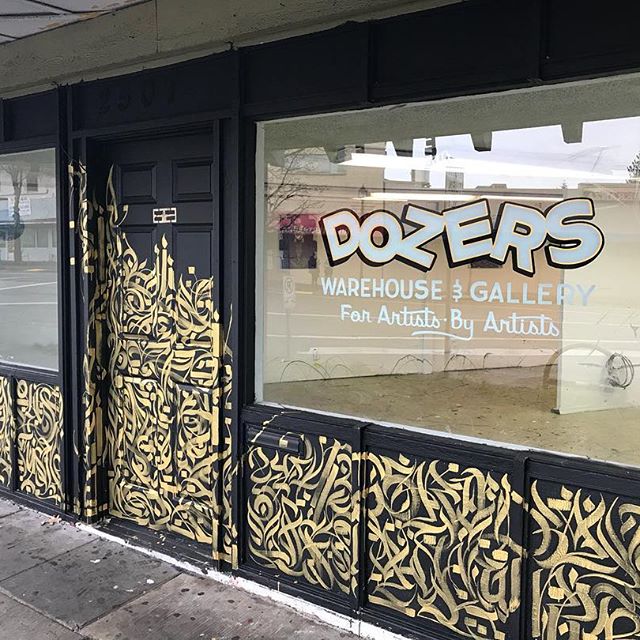
The seeds planted with Beacon Arts have bloomed into something unexpected. In the realest sense possible, the dead space of an unoccupied warehouse has come to life. Over 100 murals fill every inch of space that paint can reach. Some 75 odd artists from all over the world have touched the walls. The space has been referred to in the media as a museum, and the formal tour of its artifacts has been walked by everyone from neighbors to the mayor of Seattle. Dozer shares the space with people in the community to throw dozens of events and set up shop for projects. Non-profits have made a home in its annexes. One of them, Art Vault Seattle, was started by the artist Afro to provide artists around the country with free art supplies during the Covid pandemic. They’ve also created a fund to bail activists protesting racial injustice out of jail and are providing free screen-printing for artists to spread their message and promote their work. All-ages events have brought new artists out of their youth and onto the walls alongside their heroes. People who would never have met are painting next to each other inside the same cloud of coffee, acrylic, and aerosol fumes.
Dozer says that part may be the greatest value he’s drawn from the space. “The art world is so full of egos. There’s all these different reasons for people to feel like they’re on different levels. When I took over the space, I opened it up to my friends and artists I respected, and I let their friends and people they respected come through. I don’t care about someone being famous. Some people are dope drawing in their bedroom and no one knows. Some people blow up for making a duct tape banana. You never know what might make an artist successful. But none of that was at the forefront of people’s minds in the warehouse. We were just there to paint. It felt like everyone was on the same level, and honestly I think that as much as it felt good for the new artists to be next to these heavyweights, it probably felt good for the homies with big names to be free to just get down next to everyone else.”
The success of Dozer’s Warehouse has been lauded around the city and the premise of conversations started far outside of the 206 area code. Dozer has been nominated for awards for what he built. It would seem ironic that all this has taken place in a venue with such a short shelf life except that its temporal nature may actually have been an essential ingredient in its cauldron of creation. Or more aptly put, it might represent one of the several elements absent from this project that allowed it to blossom.
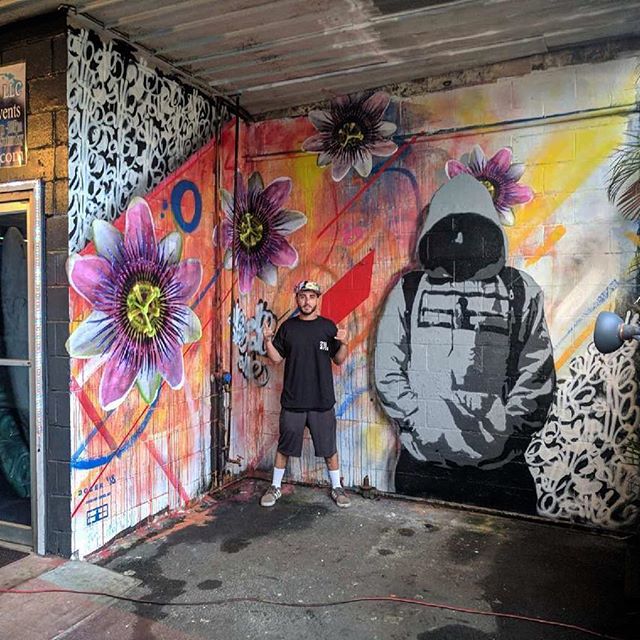
In Dozer’s words, “It’s not so much what we did that made it pop, but maybe more what we didn’t do. Money can take something pure and throw it all out of whack. The luxury I had by not having to pay rent gave me the ability to share that blessing with the community. I didn’t charge artists working in the space rent for throwing their own shows. In the gallery, I was able to just take a 15% commission on works that were sold when every other gallery regularly takes 30-50%. I got a grant so we could throw the grand opening show and make admission free. That all took a huge amount of stress off of the way I interacted with my collaborators and the audience. Also, the place is about to get torn down. I wasn’t stuck trying to build a five year plan. That made it so the art that happened there had freedom. There were no guidelines. Just make art. I didn’t have investors pushing me to deal with the type of people that traditionally saturate the market. I could put the spotlight on artists that were still coming up, people from everywhere and all walks. And at the same time, it turns out that when you do that, the art comes out incredible. The diversity and life that comes out of a project like this draws people, all kinds of people to it. It was the freedom. The freedom is what defined Dozer’s Warehouse.”
In art as in life, the constancy of change is an inevitable factor to contend with, and nothing lasts forever. The wrecking balls have returned and the imminent demolition of Dozer’s warehouse has been rescheduled. Dozer has cleaned out his personal effects, the artists have made their way out of the building, and with the exception of one final quarantine friendly barbecue, the space has taken its last breaths in the form it has come to be known. “That’s it, that’s all. Thank you, Seattle.” reads the sparse green flyer promoting the farewell gathering.
Dozer speaks of the beauty of what came out of the warehouse with perfect simplicity. Though, while a piece of art may be simple, an artist rarely exists without complexity. Knowing that the expressions of a human can never be entirely severed from the environment they were produced in is a cold fact and there are deep considerations for an artist, even in the simple act of painting a mural in a neighborhood in the crosshairs of corporate development.
With the warehouse in its twilight hour, Dozer is considering the bittersweet end of an era next to the possibilities of a return to form for him as a painter. The time and effort he put into maintaining a constantly changing, fluid space in collaboration with a battalion of intense artists of all forms consumed an enormous part of his life. With that personal space reclaimed, he’ll be free to refocus himself on the spray cans, canvases, and murals that led him to Dozer’s Warehouse in the first place.
The smoke rises around him once again as he leans back in the last chair in an empty warehouse. “It’s crazy thinking about how art affects a community. These people coming in here are tearing down buildings, old buildings. These new apartments and condos go up and what was there gets torn down. There’s life and culture in these walls. There are people inside of them. I worry about what will disappear with these buildings, with each person that moves out of the neighborhood because they can’t afford the new rent. The pictures we paint on the walls are a double edged sword. They’re beautiful, so they help the developers sell their properties and that could lead to more people leaving Beacon. At the same time, every mural, every picture leaves a piece of us here for them to see. Me and Charms just finished a huge mural of Emiliano Zapata by the warehouse, right next to where the new apartment building will be. Zapata was about land rights. He fought to protect his homeland. That mural is probably gonna raise the stock on those apartments but every time one of those windows opens, Zapata will be right there watching.”
Leaning back in his chair, he recalls a memory from not long ago although distant in the swift current of pandemic-era time. In one of the months just before quarantine, he walked back from a trip to the corner store and went to unlock the warehouse when he noticed a family taking pictures of the sunflowers on the side of the building. Something told him to stop and talk to them. It turned out to be a family from the neighborhood. Maybe they had admired the mural one at a time, walking to the store or from the bus. Today, the whole family was out for a walk. The youngest was six years old, the eldest 80. Dozer stashed the Swisher Sweets he had run to the store to pick up in his back pocket and asked the elders if the family would like a tour of the art inside. The kids lit up, tugged at their parents sleeves, and jumped up and down, excited for a little adventure of discovery. Dozer walked four generations of that family through the warehouse and watched their faces react to the pigments and textures on the walls. He spent his morning snapping pictures for them and telling them stories of the late nights, plane rides, and surly characters behind the art. They chatted about the neighborhood, what makes it unique. They remembered when La Esperanza Mercado across the street was the ABC Mart. Other things that had changed, things still the same.
Soon, Dozer’s Warehouse will be reduced to the most colorful pile of rubble on the block. A new apartment building is scheduled for development in its place. The impact the warehouse had on the city hasn’t been lost on the developers of the new property. They’ve contacted Dozer to help curate the art in the apartment building’s lobby and halls. There are conversations about indoor murals adorning the interior of the new building. Dozer has already reached out to some of the artists in his network.
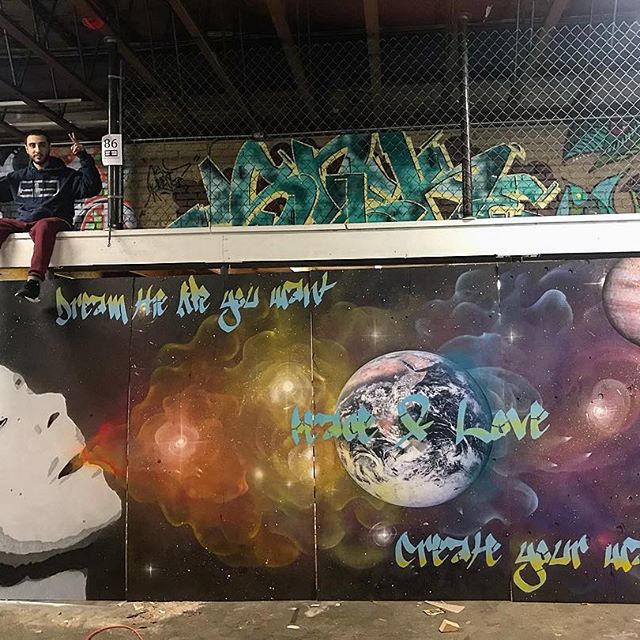
It seems that whoever moves into these new apartments will undoubtedly have the privilege of sharing some of the physical beauty that made Dozer’s Warehouse special. The owner of the property has a practice of salvaging materials from his demolition sites. In the coming days, the walls of the warehouse will come down, and the demo team will pull beams, boards, and planks from the wreckage like limbless soldiers maimed on the battlefield but still breathing. The materials will be grafted into fixtures of a reborn edifice and the brochure will advertise local art and reclaimed lumber. It brings to mind the theoretical question: If you remove a board from a ship and replace it with a new one, is it the same ship? What if you remove one board at a time until you’ve replaced them all?
Dozer reflects. “In a way, those sunflowers have come to be iconic. To me, they represent Beacon Hill. And I think other people agree. The town is changing. Man, the world is changing. Who would have thought in 2019, that we’d be waking up in a world like this today? Nothing is how we remember it. And Beacon Hill is changing. People take a print of my flower and they feel like it’s a moment that’s still. That painting won’t change. It’s Beacon right now. We can work and fight for our neighborhood, but I know I can’t keep this all the same. I’m an artist. What I know I can do is take this moment right now and paint it.”
The Southend, Central District, and other areas all over Seattle facing the reality of gentrification have history and culture in their sidewalks and streets. They are full of the flesh and blood of people in the buildings that line their avenues. Those neighborhoods’ proximity to business and financial districts make their property valuable to developers interested in the profits growing from the soil of an economically expanding city. If time devours all things and nothing lasts forever, hope for stability is an uphill battle. Dozer and the scores of artists that took moments in time and put them on stone walls soon set to be crushed back to sand will be working as the world changes, protecting its memories with brushes and spray cans. Activists will be fighting to preserve structures and institutions. And for the ones that fall to the wrecking ball and the new people who move into the complexes that rise from their ash, Emiliano Zapata, frolicking whales, and sunflowers will be looking up at them from the nearby walls reminding them to treat their inheritance with care.

